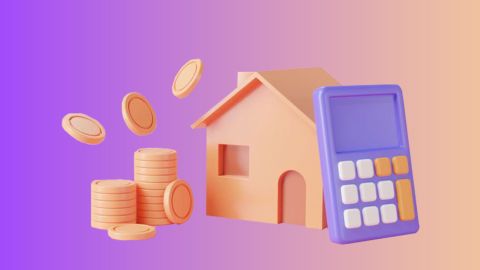In recent years, the topic of affordable housing has become increasingly prominent on global socio-economic and political agendas. Amid soaring property prices and escalating living costs, millions around the world, including India, grapple with finding a comfortable, suitable place they can call 'home'. But what exactly is ‘affordable housing’? How does it benefit society and the economy? What characteristics should it possess? And what are the challenges in achieving it in a vast and diverse country like India? We will delve deep into these questions and also look closer at various policies and initiatives cantered on them. Particularly, we shall consider the role of affordable Home Loan by Bajaj Finance, a strategic tool for enabling easy access to affordable housing, making homeownership a tangible reality for countless individuals.
What is affordable housing?
Affordable housing refers to housing units that are reasonably priced for people on modest incomes. It is traditionally defined by the housing cost that a household can bear, considering its income. Generally, housing is considered affordable if it takes up no more than 30-40% of a household's income. Affordable housing caters to different sections of society, including low-income groups, middle-income groups, and economically weaker sections.
Benefits of affordable housing
The benefits of affordable housing are manifold. First and foremost, it provides a stable living environment, which is critical for families’ well-being, especially for children’s education. Furthermore, affordable housing reduces the financial stress on low-income households, enables them to spend on other crucial areas like health and education, enriches the local economy, and instigates job creation.
What are the key characteristics of affordable housing?
Affordable housing should satisfy some essential characteristics. These comprise being in a location with easy access to livelihood opportunities, educational institutions, and healthcare facilities; being equipped with necessary amenities like water, sanitation, and electricity; and being constructed with sustainable, smart techniques that ensure the house's longevity.
Challenges in achieving affordable housing
However, achieving affordable housing in India faces various challenges. These include high land prices; escalating raw material, labour, and construction costs; regulatory issues; lack of finance or high-interest rates; and the burgeoning demand-supply gap.
Efforts are being made at various levels to combat these issues and promote affordable housing. The Indian government has launched several policies and initiatives for this, like the ‘Pradhan Mantri Awas Yojana’ (PMAY), which aims to provide affordable pucca houses to all. It has also given infrastructure status to affordable housing to encourage more private sector involvement.
Against this backdrop, playing a significant role is the affordable Home Loan by Bajaj Finance, a key enabler in transforming the ‘homeownership’ dream into reality for many Indians. Presenting an uncomplicated application process, low-interest rates, large loan amounts, and longer tenures, this home loan scheme stands out for facilitating not just the procurement of affordable housing but also accomplishing it in an affordable manner.
In conclusion, cultivating affordable housing is a complex challenge, but it is also a necessity for enduring social and economic progress. And affordable home loan offerings like that from Bajaj Finance, committed to supporting people's aspirations of owning their home, are paving the way forward. By providing accessible housing finance, they are not only enabling shelter, but also helping cultivate brighter futures, richer lives, and stronger, inclusive communities. After all, a 'home' is more than just a structure. It is a place of security and emotional anchorage; it is a symbol of stability and growth.




